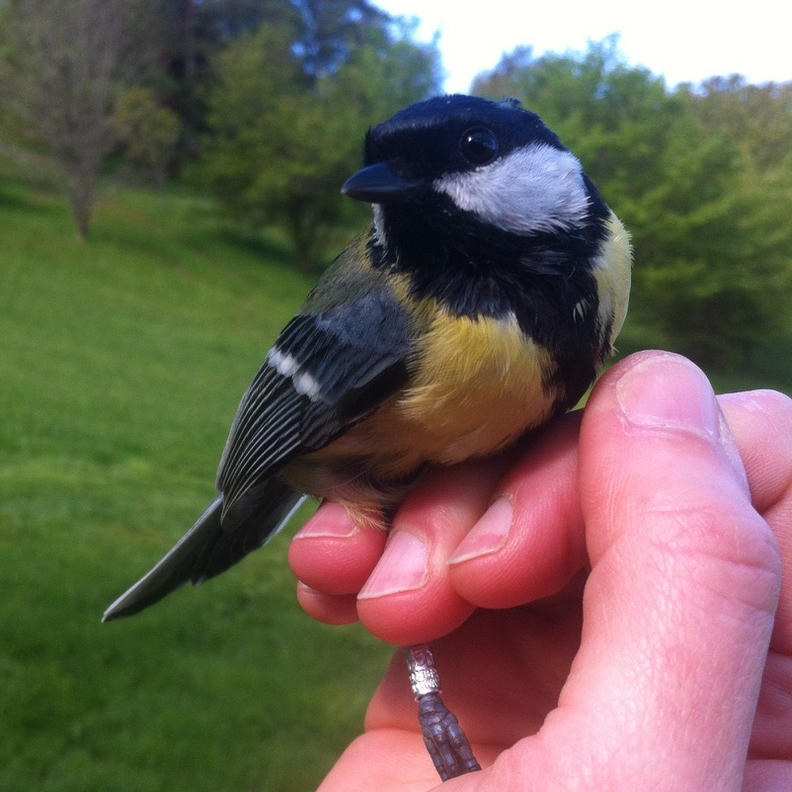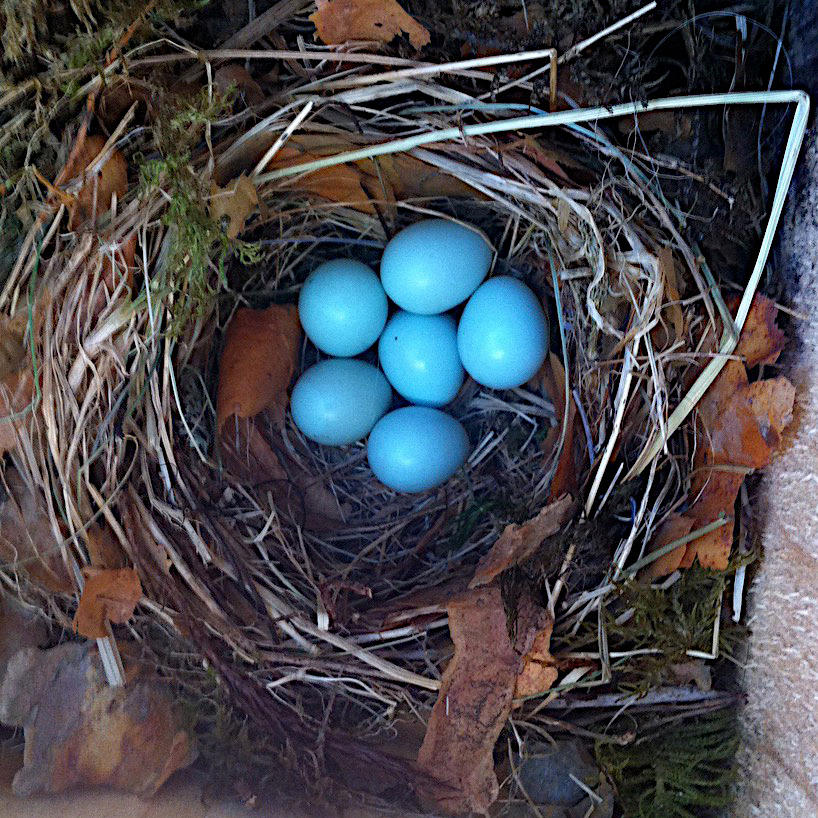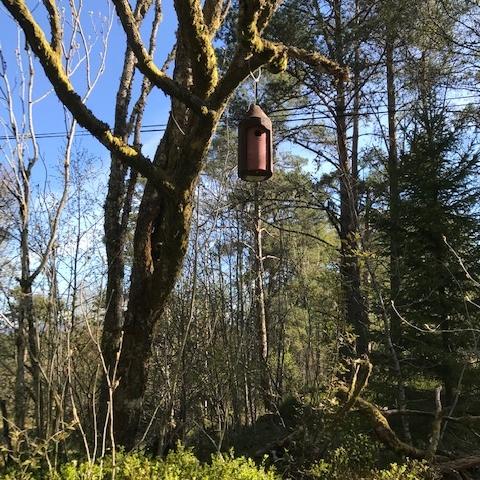Overvåking av hekkende fugler
Dr. Adele Mennerat og kolleger (UiB, Institutt for biovitenskap (BIO)) bruker arboretet til utdanning og forskning
Hovedinnhold
Siden 2017 har reproduksjonen av hullhekkende fugler blitt overvåket i Universitetsmuseets botaniske hage og arboret. De viktigste fugleartene som bruker reirkassene våre er kjøttmeis (Parus major) og blåmeis (Cyanistes caeruleus). Noen få par svarte fluesnappere (Ficedula hypoleuca) adopterer dem også hver vår etter at de har kommet tilbake fra migrasjonen.
UiBs "hullhekkende fugl"-team består av Adele Mennerat (forsker, ansvarlig for datainnsamling), Arild Breistøl (sjefingeniør) og Sigrunn Eliassen (førsteamanuensis) fra Institutt for biologiske vitenskaper.
Reirkassene brukes til økologisk utdanning og forskning. Studenter i BIO241-emnet (Atferdsøkologi, undervist av Sigrunn Eliassen) får muligheten til å delta i felten et par ganger i løpet av vårsemesteret og gjøre seg kjent med det grunnleggende om feltarbeid i fugleøkologi. De lærer å bestemme eggleggingsdato, klekkingsdato og andre fenologiske trekk. Som en del av kurset kan de også utnytte og analysere dataene som er samlet inn gjennom årene.
Forskningsmessig er dette nettstedet en del av Studies of Individual Birds Network and Database (SPI-Birds: https://nioo.knaw.nl/en/bergens-arboretum). Hver vår ringmerker vi systematisk kyllinger og fanger voksne fugler i hvert reir for å identifisere dem. Dette lar oss spore individer på tvers av år, etablere mor-avkom-forhold (farskap er litt mindre sikkert) og estimere individenes reproduksjonssuksess – en viktig komponent i helsetilstand. Vi tar også morfologiske målinger for å estimere hvert individs kroppstilstand. Til slutt registrerer vi reirstørrelse og -sammensetning. Alt dette gjøres i henhold til regler og forskrifter, og av personer som har ringmerkingslisens utstedt av Stavanger Museum (A.M. og A.B.).
Å samle inn disse dataene på en standardisert og systematisk måte krever tilstedeværelse på stedet minst én gang i uken i april – begynnelsen av mai, og deretter flere ganger i uken. Hvis du ser noen gå rundt med en sammenleggbar stige, er det stor sannsynlighet for at det er en av oss på vei til en reirkasse. Hvis du har spørsmål, er det bare å spørre!
Fun facts
Meiser bygger stort sett reiret sitt med mose.Det legges på toppen av det myke fôrmaterialer som hjelper til med å isolere eggene og de unge ungene som i starten ikke klarer å regulere temperaturen. Med tanke på været i Bergen om våren er dette svært viktig for deres overlevelse! De mest brukte naturlige fôrmaterialene på Arboretet er fjær og pattedyrhår (ofte ull). Meiser som hekker rundt mennesker bruker imidlertid noen ganger uventede materialer: toalettpapir, syntetiske fibre, biter av hyssing... Se hva vi fant i et av reirene våre: langt, brunt menneskehår! Uansett hvem sitt hår dette er, mistenker vedkommende neppe at det senere ble resirkulert for å holde unge fugleunger varme og tørre...
Visste du at blåmeisen er kjent for å bruke friske aromatiske planter i reirene sine (lavendel, mynte og mer), i tillegg til andre reirmaterialer? Denne oppførselen er hyppigst i Sør-Europa, for eksempel Korsika hvor mer enn 15 aromatiske arter brukes i reir av blåmeis. Bevis viser at disse plantene har en antibakteriell funksjon og hjelper ungene å vokse bedre før de flyr av gårde ved 20 dagers alder. Her i nord er aromatiske planter sjeldne i naturen, men det ser ut til at blåmeis kan bruke dem når de finner dem. Reir i den botaniske hagen inneholder noen ganger friske lavendel- eller mynteblader.
Referanser
Mennerat A, Mirleau P, Blondel J, Perret P, Lambrechts MM, Heeb P. 2009. Aromatic plants in nests of the blue tit Cyanistes caeruleus protect chicks from bacteria. Oecologia 161:849-855. [ doi:10.1007/s00442-009-1418-6 ]
Mennerat A, Perret P, Bourgault P, Blondel J, Gimenez O, Thomas DW, Heeb P, Lambrechts MM. 2009. Aromatic plants in nests of blue tits: positive effects on nestlings. Animal Behaviour 77:569-574. [ doi:10.1016/j.anbehav.2008.11.008 ]




